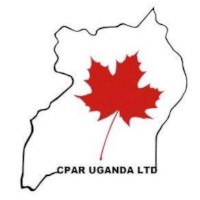Considering that tuberculosis (TB) is among infectious diseases that are transmitted through the air, it is logical to expect that nations would consider its treatment and control of utmost priority.
One would not expect, for example, inconsistency between a country’s ability to pay, in this context measured by its gross domestic product (GDP) per capita and the country’s per capita provisioning for TB control.
Take for instance Uganda, Kenya and Tanzania, countries that are among the 22 high TB disease burdened countries (TB countries). Uganda with the lowest GDP per capita – US$ 711 – in 2014 better funded its National TB Programme as compared to Kenya and Tanzania.
Uganda’s 2014 budget, US$ 24 million, for its National TB Programme (TB Budget) was 79 percent funded, of which 10 percent was from its own resources and 69 percent was from external sources.
Uganda’s TB prevalence, the number of cases of TB in a population, in 2014 was 60 thousand, which means that Uganda’s 2014 funded TB budget provisioned average funding of US$ 316 per TB case.
Kenya, in comparison, with a GDP per capita of US$ 1,345 in 2014, the highest GDP per capita, nearly double that of Uganda, funded 26 percent of its 2014 TB budget from own resources and 28 percent from external sources; meaning that 46 percent of Kenya’s TB budget was not funded.
Kenya’s TB prevalence in 2014 was 120 thousand cases. Even though Kenya’s 2014 TB budget was US$ 45 million, only 54 percent of it was funded; meaning that its 2014 funded TB budget provisioned average funding of US$ 203 per TB case – US$ 113.
The 2014 TB budget for Tanzania, US$ 67 million, was 100 percent not funded – this for a country with a 2014 TB prevalence of 270 thousand cases and that had a GDP per capita of US$ 924 in 2014.
In comparison with the whole continent, the nine tuberculosis (TB) disease burdened countries (TB countries) in Africa, in 2014, had a combined TB budget of 806 million. Of that budget, only 18 percent was funded by the nine countries, 38 percent was externally funded, and the bulk – 44 percent – was not funded.
The nine African TB countries’ funded TB budgets in 2014 provisioned on average US$ 208 per TB case for their over 2.2 million TB cases. It is important to remember that the average provision for the nine African TB countries was significantly lower, on grounds that the 2014 Tanzania TB budget was100 percent not funded.
Interestingly, among the nine African TB countries is Nigeria, a country generally considered ‘richer’ among other African countries in GDP per capita terms.
Surprisingly, 68 percent of Nigeria’s 2014 TB budget was not funded and yet Nigeria with its GDP per capita of US$ 3,212 had the second highest GDP per capita in 2014 among the nine African TB countries, exceeded only by South Africa which had a 2014 GDP per capita of US$ 6,630.
Nigeria, moreover, funded only 13 percent of its TB budget, while funding from external sources covered 19 percent of the Nigeria’s TB budget.
This analysis is primarily based on the country profiles that are published in the 2015 Global Tuberculosis Report and on country statistics that are published online by the World Bank.

By Norah Owaraga, CPAR Uganda Managing Director, Cultural Anthropologist researching Tuberculosis in Uganda.
Post featured image credit: Doctors with Africa


2 responses to “Research – situation analysis TB funding in East Africa”
[…] Be that as it may, however, in 2014, Russia’s TB budget was nearly 1.9 billion and it was fully funded by Russia. This means that for its 160 thousand TB cases in 2014, Russia’s TB budget made funding provision of US$ 11,838 per case, more than 37 times Uganda’s provision per TB case. […]
LikeLike
[…] cannot assume that Uganda’s entire tuberculosis (TB) budget provision per capita wholesomely and directly reaches TB patients who most need it. In Uganda, for example, […]
LikeLike